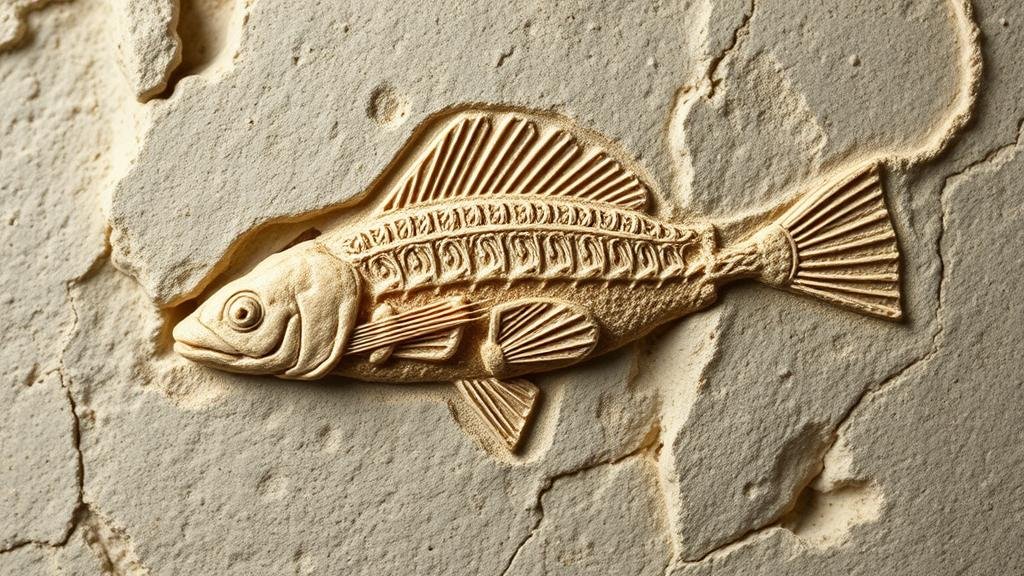Discovering fossils of prehistoric fish in the chalk cliffs of Denmark’s Stevns Klint.
Discovering Fossils of Prehistoric Fish in the Chalk Cliffs of Denmark’s Stevns Klint
Stevns Klint, a UNESCO World Heritage Site located on the Danish coast, is renowned for its striking chalk cliffs and rich fossil deposits. Among these, the discovery of prehistoric fish fossils provides a fascinating avenue for rockhounds and mineral collectors alike. This article delves into the geological significance of Stevns Klint, the types of fossils found, and practical tips for collectors venturing into this unique environment.
The Geological Marvel of Stevns Klint
Stevns Klint showcases a geological record that spans approximately 65 million years, marked by a dramatic transition from the Late Cretaceous to the early Paleogene periods. chalk cliffs reveal layers of sediment that were once the ocean floor during the age of the dinosaurs. The site is acclaimed for its well-preserved fossils, including a variety of marine life, particularly fish.
The chalk itself, primarily composed of calcite derived from the microscopic remains of marine organisms known as coccolithophores, serves not only as a stunning visual landscape but also as a significant fossil repository. This sedimentary rock formation contributes to the preservation of fossils, which can be found in various strata, highlighting the diversity of aquatic life that once inhabited these ancient seas.
Types of Fossils Found
The fossils discovered at Stevns Klint provide a window into the marine ecosystem of the Late Cretaceous period. Rockhounds will find a variety of fish fossils, including:
- Exotic Bony Fish: Including taxa such as the Cretaceous lepisosteids, or bony gars, showcasing elongated bodies and armored scales.
- Sharks: Remnants of smaller shark species reveal insights into the predatory dynamics of the ancient ocean.
- Chondrichthyes: Cartilaginous fish such as rays and skates, provided by fossilized teeth and fin spines.
Fossils are often found within the prominent white chalk and can exhibit an array of colors from surrounding sediment, creating a striking contrast that is visually appealing and scientifically valuable.
Scientific Importance of the Fossils
The fossils at Stevns Klint are not mere relics; they hold significant paleontological insights. For example, the abundance of fish fossils helps researchers understand evolutionary developments during a time marked by mass extinction. The presence of these fossils enables scientists to study species diversification, extinction events, and ecological changes over geological timescales.
Plus, the site provides critical data points for researchers investigating the broader impacts of climate change and sea-level fluctuations, as the sedimentary layers reflect historical accumulations resulting from these phenomena.
Practical Tips for Rockhounds and Mineral Collectors
For those interested in fossil hunting at Stevns Klint, preparation is key. Here are some actionable tips to enhance your collecting experience:
- Research Local Regulations: Before embarking on a fossil-hunting expedition, familiarize yourself with local regulations regarding fossil collection. Some areas may have specific guidelines or restrictions.
- Visit During Ideal Weather: Plan your visit during dry periods to avoid landslides, as wet conditions can make the cliffs unstable.
- Use Appropriate Tools: Equip yourself with hammer, chisels, and safety goggles. A hand lens can be beneficial for examining smaller specimens on-site.
- Stay Safe: Always prioritize safety by observing the cliffs from a distance and avoiding unstable ledges.
- Document Finds: Keep detailed records of your finds, including location and time of discovery. This information can be invaluable for future reference and research.
Conclusion
Stevns Klint is not just a scenic coastline; it is a treasure trove of prehistoric life waiting to be discovered. The fossilized remains of fish and other marine organisms provide critical insights into Earths history and the evolution of life in our oceans. For rockhounds and mineral collectors, visiting this site offers both the thrill of discovery and the opportunity to contribute to our understanding of paleontology. With proper preparation and respect for the natural environment, enthusiasts can uncover invaluable pieces of history, solidifying Stevns Klints place as a crucial landmark for both scientific inquiry and recreational fossil hunting.

